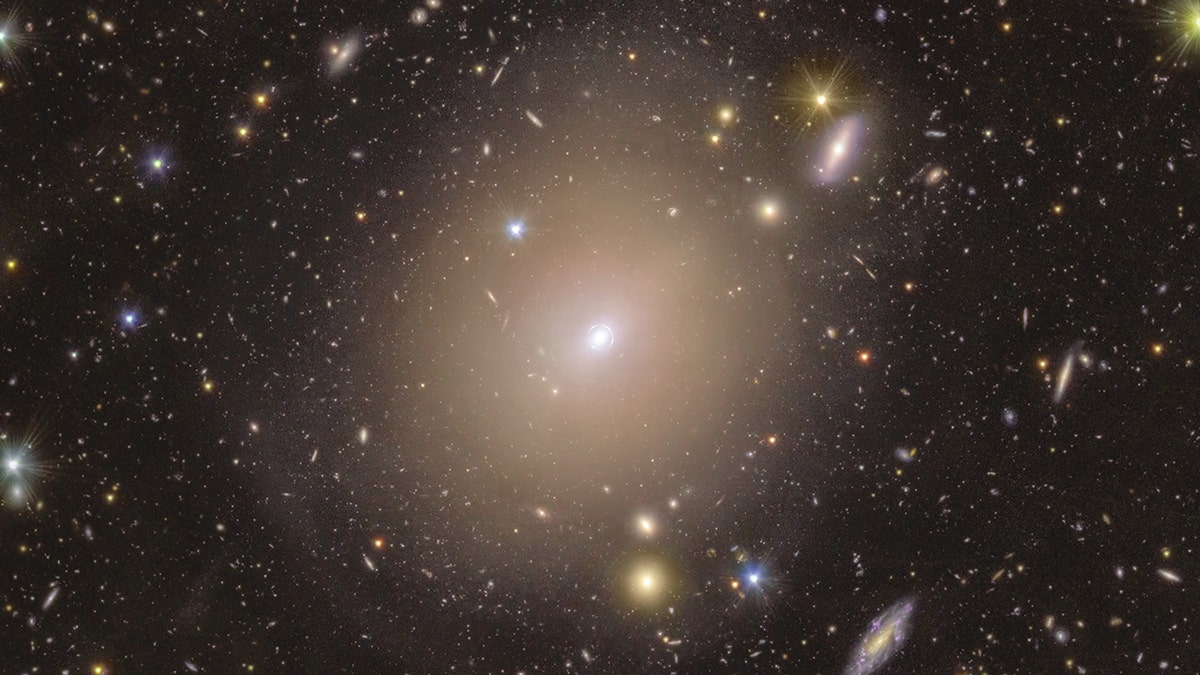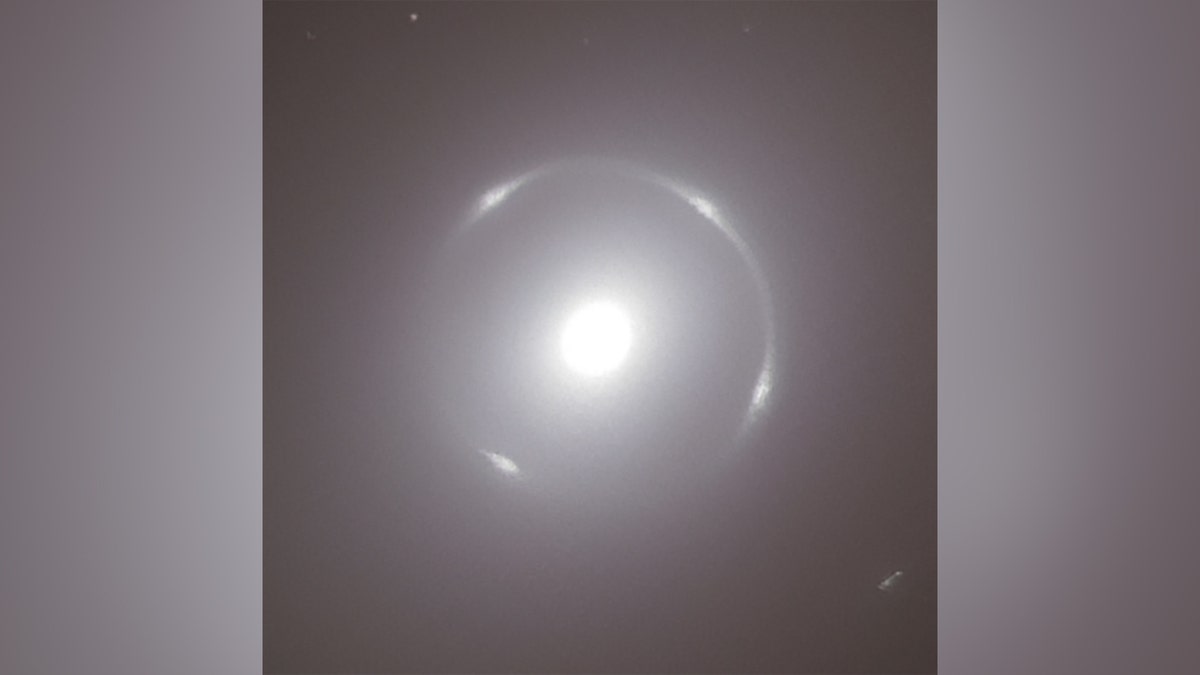The European Space Agency's (ESA) Euclid space telescope has made an unexpected discovery: a brilliant halo of light, known as an Einstein ring, encircling a galaxy approximately 590 million light-years from Earth. This phenomenon, captured during Euclid's testing phase, surprised astronomers who had been studying the galaxy for over a century without ever observing the ring.

The image depicts a sea of stars and galaxies surrounding the hazy halo. At the center, a fuzzy, yellow-hued light bulb shape surrounds a small bright spot, all nestled within a thin, closely drawn circle of light. This captivating image was captured during Euclid's initial testing phase in September 2023. While the images were intentionally out of focus, Euclid Archive Scientist Bruno Altieri noticed the unusual phenomenon and investigated further.
Altieri explained, "I monitor the incoming data from Euclid. Even in the first observation, it was visible. As Euclid gathered more data, a perfect Einstein ring emerged. As someone with a lifelong fascination with gravitational lensing, this was truly remarkable." The ESA describes Einstein rings as exceptionally rare occurrences.

This close-up image showcases a thin, perfectly circular ring with a bright white disc at its center, contrasting against a hazy dark gray background. The formation of an Einstein ring occurs when light from a distant galaxy is bent by the gravity of a foreground galaxy, acting like a magnifying glass. This phenomenon, called gravitational lensing, creates a ring shape when the background galaxy, lensing galaxy, and telescope are perfectly aligned.
The galaxy in question, NGC 6506, is located roughly 590 million light-years away. This marks the first time the ring of light around its center has been detected. Conor O’Riordan of the Max Planck Institute for Astrophysics emphasized the scientific significance of strong lenses due to their rarity and usefulness, highlighting the proximity and beautiful alignment of this particular ring.

Einstein rings are a manifestation of Albert Einstein's general theory of relativity, which predicts the bending of light around objects in space. This lensing effect enables scientists to observe light from otherwise hidden distant galaxies. Valeria Pettorino, ESA Euclid project scientist, expressed intrigue that this ring was found around a well-known galaxy, NGC 6506, discovered in 1884, emphasizing Euclid's power to uncover new phenomena even in familiar areas.
Euclid's six-year mission is expected to reveal more about gravity's role in the universe, as well as the nature of dark energy and dark matter. The telescope will map over a third of the sky and observe billions of galaxies up to 10 billion light-years away. Scientists anticipate Euclid will discover approximately 100,000 more strong lenses, making the discovery of this spectacular ring so close to Earth even more astonishing. O’Riordan expressed confidence that Euclid's wealth of new data will revolutionize the field.
Comments(0)
Top Comments